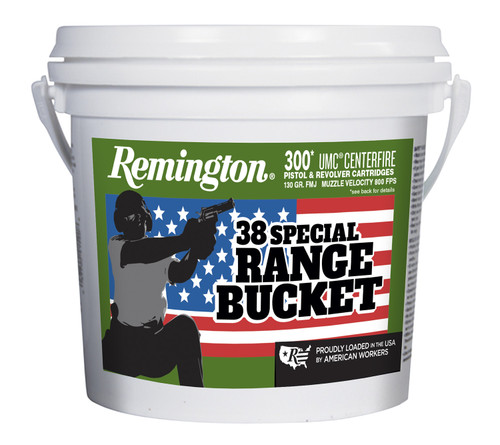-

-

-

-

-

-

-

-

-

-

-

-

-

Buffalo Bore Ammo
Buffalo Bore .38 Special +P Strictly Business 158gr Soft Cast HP Ammo
$34.66 - $1,371.01 -

Buffalo Bore Ammo
Buffalo Bore .38 Special +P Heavy Strictly Business 125gr JHP Ammo
$34.66 - $362.70 -

Atomic Ammo
Atomic .38 Special Match Precision Craft 148gr Hollow Base Wadcutter Ammo
$0.00 - $35.55 -

-

Underwood Ammo
Underwood .38 Special +P Xtreme Penetrator 140gr Copper Solid Monolithic Ammo
$37.60 - $339.41 -

-

-

-

Winchester Ammo
Winchester X38WCPSV Super X Super Match Lead Semi-Wadcutter 158 Grain .38 Special 755 fps
$46.68 - $375.86 -

-

-

-

-

-

-

-

-

.38 Special Ammo
Professionally Reviewed by:
Nathaniel Boos

Nathaniel Boos is a lifelong firearms enthusiast and shooter, renowned for his experience as a long-range shooter, ammunition importer/exporter, and firearms manufacturer. With years of hands-on experience, he is a trusted authority in the ammunition and firearms industry.
Credentials:
- • 2x Team Safari Competitor
- • KRG Training Level 1, 2, and Force on Force CQB certified
- • Licensed Texas Conceal Carry Holder
- • Kranz Firearms Training Group Advanced Carbine Certified
.38 Special Ammo: At a Glance
| Key Characteristics | |
|---|---|
| Firearm Type | Revolver, Some Semi-Automatic Pistols |
| Primer Type | Small Pistol |
| Used For | Self-Defense, Target Shooting, Law Enforcement |
| Case Design | Rimmed, Straight |
| Year Introduced | 1898 |
.38 Special Ammo: At a Glance: Pros and Cons
Pros
- ✔ Low recoil, suitable for novice shooters
- ✔ Excellent accuracy at short to medium ranges
- ✔ Widely available and affordable
- ✔ Versatile for various handgun applications
- ✔ Compatible with .357 Magnum revolvers
Cons
- ✘ Limited stopping power compared to larger calibers
- ✘ Not ideal for long-range shooting
- ✘ Less effective against large or dangerous game
- ✘ Lower capacity in most firearms compared to semi-auto pistols
.38 Special Ammo: In Depth
By 1900, black powder revolvers were technically obsolete, yet still in common use by American military and police forces. Despite the fact that these guns chambered brass-cased ammo, most of the cartridges they fired barely broke the 700/fps mark, and with fairly lightweight bullets to boot. Purpose-built smokeless powder shooters were around, but not in great numbers, and running the newer powder technology in older, weaker-framed guns could instantly spell their ruin (they’d blow up). Also acutely adding to the bad rap for black powder blasters were reports from overseas that the Army’s .38 Long Colt cartridge failed to drop charging attackers, even with well-placed shots. So, there was hunger for a performance upgrade, but at this point, it wasn’t necessarily time to abandon the revolver altogether. In fact, the US Army’s .38 Long Colt revolver cartridge would hang on to its place as primary sidearm ammunition until 1911 – a year that many firearms enthusiasts know well for the introduction of a certain rimless cartridge automatic pistol.
Right in the middle of the old .38 Long Colt’s service life, Smith and Wesson lengthened its brass case and upped the powder charge, calling the result .38 Smith and Wesson Special. Shortly thereafter, smokeless powder would be substituted for the black powder, further increasing the cartridge’s velocity. By that time, .38 Special featured a 158-gr. LRN (lead round-nose) bullet traveling at roughly 800/fps, and S&W saw fit to update one of their most popular revolvers in order to highlight the round. Chambered especially for the .38 Special cartridge, and fittingly named for its intended target markets, the 1902 version of the S&W Military and Police revolver gathered momentum quickly in both of its namesake arenas – particularly in American law enforcement service.
During WWI, M1911 production was insufficient for supplying the large number of troops deployed overseas, so a 1905 version of the S&W M&P would bolster sidearm inventories at the time. This became a pattern, as WWII saw the Navy and Marine Corps use another M&P variant, the S&W Victory, heavily some twenty-five years later.
Even though the heavier hitting .357 Magnum and even more-powerful revolver cartridges made their marks as early as the 1930s, .38 Special remained the cartridge of choice for US law enforcement for the majority of the 20th century. Shooters appreciated the manageable recoil of the cartridge, even when +P loads were used. The all-steel frames of the contemporary LE revolvers such as the aforementioned M&P or Colt’s Official Police also tamed whatever snappiness might have been there in the first place. Smaller-framed .38 Special snub noses pulled backup duty, often in ankle holsters, as they were easier to conceal.
The desire for better ballistics and more capacity eventually sent .38 Special on its way in favor of .40 S&W and 9mm Luger in the law enforcement sphere. However, newer lightweight metal revolvers chambered in .38 Special continued to be used as backups, during off-duty carry, and for concealed carry by the wider public. In fact, much of the current market activity for this cartridge is concealed carry related.
History and Development
The cartridge was introduced in 1898 and quickly gained popularity among law enforcement agencies and civilian shooters.
Initially loaded with black powder, the .38 Special transitioned to smokeless powder in the early 20th century, which improved its performance. The cartridge's design allowed for higher pressures than its predecessor, resulting in increased velocity and energy.
Complete Timeline of .38 Special Development:
.38 Special Performance
The .38 Special offers reliable performance characteristics that have made it a popular choice for law enforcement, self-defense, and target shooting. Here's a breakdown of its key performance characteristics:
| Characteristic | Performance |
|---|---|
| Velocity | 700-1,000 fps (standard pressure)\n800-1,150 fps (+P loads) Varies based on bullet weight and load type |
| Energy | 200-300 ft-lbs (standard pressure)\n250-350 ft-lbs (+P loads) Sufficient for self-defense at close ranges |
| Recoil | Low to moderate Manageable in most revolvers, suitable for novice shooters |
| Accuracy | Excellent at short to medium ranges Popular for competitive target shooting |
| Penetration | 9-14 inches in ballistic gelatin Depends on bullet design and load type |
Bullet Weight vs. Muzzle Velocity
This chart shows how bullet weight affects muzzle velocity for common .38 Special loads.
.38 Special: Effective Range for Different Applications
This table provides estimated effective ranges for .38 Special ammunition in various applications. Ranges are based on typical bullet weights and velocities.
| Application | Effective Range (yards) | Notes |
|---|---|---|
| Law Enforcement | 0-50 | Suitable for close-quarters engagements, limited penetration |
| Self-Defense | 0-25 | Effective for personal protection, manageable recoil |
| Target Shooting | 0-75 | Accurate at short to medium ranges, popular for practice |
| Hunting (Small Game) | 0-50 | Suitable for small game at close ranges |
| Competition | 0-50 | Used in various revolver competitions, good accuracy |
Note: The .38 Special is known for its moderate recoil and good accuracy at short to medium ranges. Always prioritize safety and adhere to local laws and regulations.
Applications for .38 Special
The .38 Special's moderate power and versatility make it suitable for several applications:
.38 Special Ammo Comparisons
To understand the .38 Special's place in the handgun world, it's helpful to compare it to similar cartridges. Click on each comparison to see more details:
Recoil Energy Comparison
Compare the estimated recoil energy of .38 Special with other popular handgun cartridges. (Based on a 2 lb handgun)
Ballistic Trajectory Comparison
This chart compares the ballistic trajectory (bullet drop) of .38 Special with other popular handgun cartridges over distance.
Wind Drift Comparison
This chart compares the wind drift of .38 Special with other popular handgun cartridges in a 10 mph crosswind.
Energy Retention Comparison
This chart compares the energy retention of .38 Special with other popular handgun cartridges over distance.
Sectional Density Comparison for .38 Special Ammo
Sectional density is a measure of a bullet's mass relative to its diameter. For .38 Special ammunition, this metric is particularly important for self-defense and target shooting applications.
| Cartridge | Bullet Weight (gr) | Sectional Density |
|---|---|---|
| .38 Special | 110 | 0.164 |
| .38 Special | 125 | 0.186 |
| .38 Special | 130 | 0.194 |
| .38 Special | 148 | 0.221 |
| .38 Special | 158 | 0.236 |
Note: Sectional density is calculated as (bullet weight in pounds) / (bullet diameter in inches)². For .38 Special, the bullet diameter is typically 0.357 inches. Higher sectional density can contribute to better penetration, but factors such as velocity and bullet design also significantly influence overall performance.